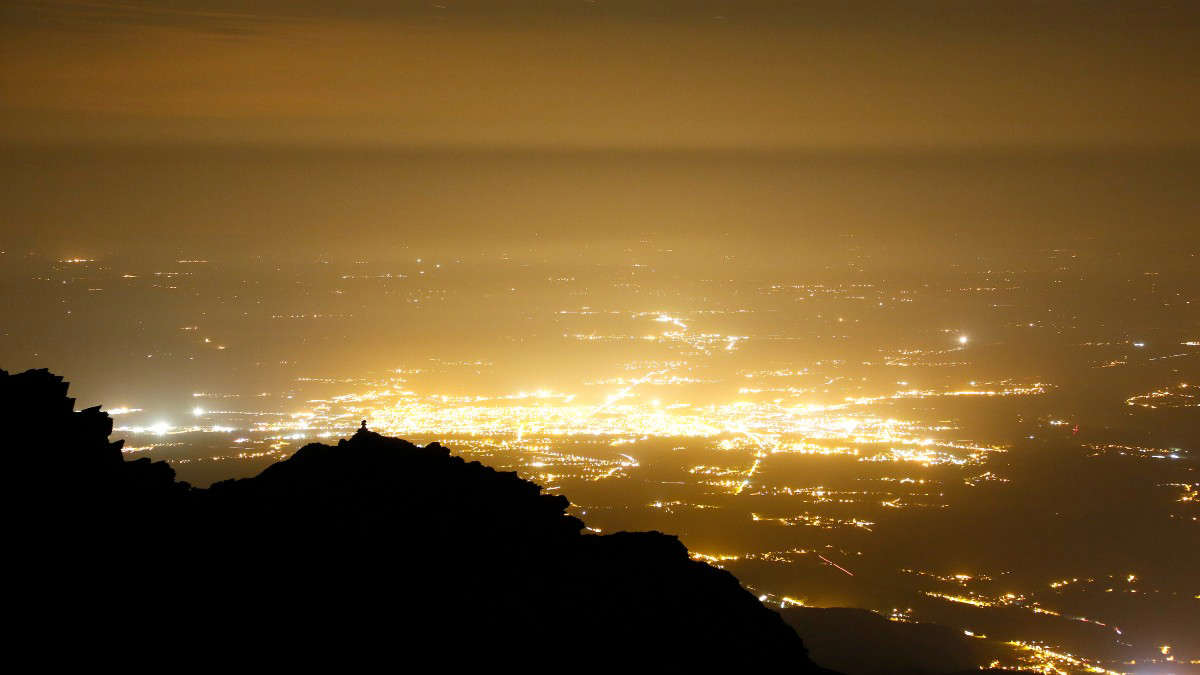11 Dec 2024

Tired Earth
By The Editorial Board

Light pollution can have serious implications for our environment and even our health. Street lighting, domestic and commercial lights, vehicles and security lights all contribute to the creation of a dome-like shield of light pollution called skyglow, according to the International Dark-Sky Association.
Along with skyglow, light pollution consists of glare, light trespass and clutter. Glare relates to light that can cause direct visual discomfort, whereas light trespass is light that escapes from sources such as bedroom windows. Clutter is the excessive grouping of lights.
Light pollution can also be amplified by other types of air pollution, such as smoke and dust. This is because these types of pollution can scatter light in all different directions and brighten the sky even further.
One of the immediate effects light pollution has on our environment is to obscure our view of the true night sky, according to telescope manufacturer Celestron. Without the presence of artificial light, the night sky is awash with celestial bodies, far away galaxies and constellations. However, if you’re looking up from the belly of a big city, you’d be unable to see many of these night sky objects.
Around 99% of people living in Europe and America live under skies that are almost 10% brighter than they would naturally be, according to the BBC. This also means that a large portion of the population doesn’t use the full potential of their eyes.
The retina of the human eye can naturally adjust its light-sensing cells to acclimate to very low-light conditions, to allow some sort of night vision, according to the Duke University. But because of light pollution, 37% of people living in America don’t use their night vision, according to the BBC.
To monitor and characterise light pollution, American astronomer John E. Bortle created the Bortle Dark-Sky Scale, which measures the brightness of the night sky at different locations. The scale measures our ability to observe celestial objects, such as planets and stars, under the interference of skyglow.
Other than depriving us of a starry star, there are many more implications to excess use of artificial light, such as throwing the human body's natural cycle out of whack.
Circadian rhythms are a group of physiological and neurological changes that occur in the body over a 24-hour-period. Collectively they’re also known as our body clock and is related to our sleep-wake cycle, according to Harvard University.
Once the Sun has gone down and we are exposed to low light, our bodies naturally release a hormone called melatonin. Melatonin is released from the pineal gland in the brain and helps to increase tiredness and regulate sleep cycles, with peak production occurring in the early hours of the morning, according to the UK's National Heath Service (NHS).
However, light pollution has been found to curb melatonin production in humans, even at low levels. This can result in disturbed sleep, impact our immune system and responses to stress. It has also been suggested that melatonin disruption by way of light pollution is connected to the increased risk of hormone-related cancers, such as breast or prostate cancer, according to journal Environmental Health Perspectives.
The circadian rhythm doesn’t only affect humans, but most other living things. In studies of the European perch, researchers have found that even at the lowest light intensities disrupted melatonin production within the fish, according to the journal Environmental Pollution.
Along with health issues, light pollution can interfere with the behaviours of wildlife. Nocturnal predators such as bats are among the most affected by light pollution. These flying mammals are well adapted to hunting at night and actively avoid illuminated areas.
Unfortunately, their insect prey is attracted to light sources, which leads to barren hunting grounds for bats, according to the Bat Conservation Trust. Also, when sources of artificial light are placed outside a bat's roost, it can prevent them from ever leaving and lead to them starving.
While studying the reproductive cycle of wallabies, researchers have also found that births were weeks earlier among wallabies living near a lightly polluted area, such as a naval base, than those living in more rural areas, according to the Journal Proceedings of the Royal Society B.
The study found that the use of outdoor light-emitting diodes (LEDs), which emit wavelengths in the blue spectrum of light, suppresses melatonin five times more than traditional outdoor light.
For newborn turtles, the presence of artificial lighting can make the difference between life and death, according to the Sea Turtle Conservancy. As turtle hatchlings emerge along sandy beaches, their natural instinct is to scurry to the ocean bathed in moonlight. However, street and commercial lights along the coast can confuse the hatchlings and cause them to move inland where they are often eaten or killed by car traffic.
Source : msn.com
Comment